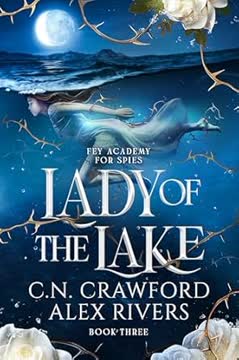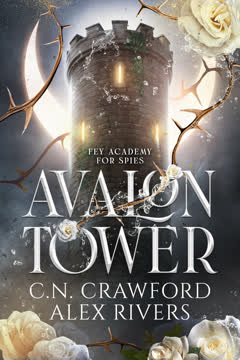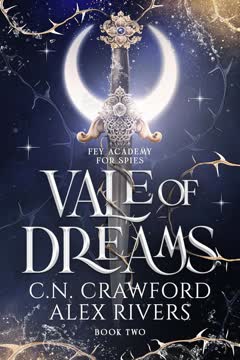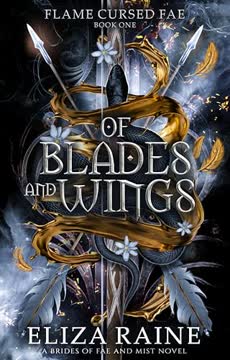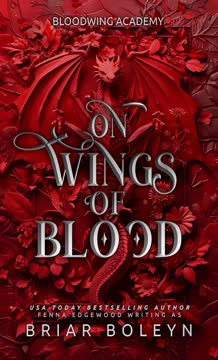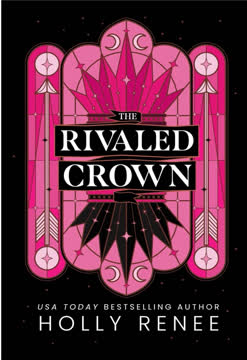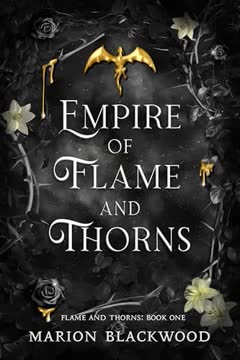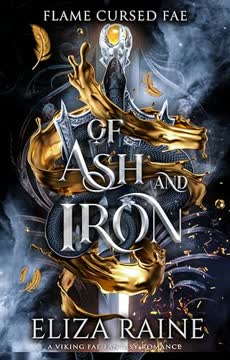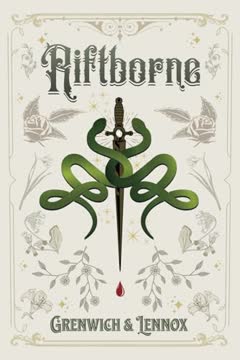Plot Summary
Spy in the Enemy's Bed
Nia, a half-human, half-Fey agent, is embedded in the heart of the Fey-ruled Brocéliande, posing as a farm girl and the prince's mistress. Her true mission is to gather intelligence for Avalon Tower, the last human stronghold, and to undermine the Fey occupation from within. She is uniquely gifted with mind-control and telepathic powers, making her invaluable to both sides. Her cover is complicated by her proximity to Prince Talan, the Dream Stalker, a dangerous and alluring figure who quickly suspects her value and coerces her into his service. Nia's double life is a constant balancing act between survival, loyalty, and the ever-present threat of exposure.
The Prince's Reluctant Bride
After a failed assassination attempt and political machinations, Talan demands Nia marry him to avoid a politically motivated union with the ruthless Countess Arwenna. The marriage is a strategic move to protect Nia from court enemies and to secure Talan's own power against his father, King Auberon. Nia, still operating as a spy, must navigate the treacherous Fey court, maintain her cover, and play the role of the prince's wife—all while plotting his downfall. The forced intimacy blurs the lines between duty and desire, as Nia and Talan's relationship grows more complex.
Masks and Motives
Nia's fabricated backstory as a farm girl is threatened as her new status as princess draws scrutiny. She must reinforce her cover, coordinate with her handler Nivene, and keep her true heritage—descendant of Morgan le Fey and Mordred—hidden. Meanwhile, Talan's own secrets and ambitions come to light: he is not the true heir, and his father's claim to the throne is a lie. Both Nia and Talan are caught in webs of deception, each using the other for their own ends, yet drawn together by shared trauma and forbidden attraction.
Wedding of Lies
The wedding is a farce, performed in secret with minimal witnesses and manipulated rituals to delay its finality. Nia uses the opportunity to further her spy work, while Talan leverages the marriage to consolidate power and avoid his father's control. The ceremony is fraught with tension, as both are aware of the other's duplicity. Nia's Sentinel powers flare, hinting at her deeper magical legacy, and the union sets the stage for shifting alliances and betrayals.
The Basilisk Hunt
To purify Nia for marriage, Talan and Nia are forced into a deadly Fey ritual: surviving a night hunted by a basilisk. The ordeal is both a test and a trap, pushing Nia's physical and magical limits. Talan's prowess and Nia's ingenuity are both on display as they evade and ultimately defeat the monster together. The shared danger forges a reluctant bond, but also exposes Nia's vulnerabilities and the growing risk of her true nature being discovered.
Nightmares and Alliances
Talan's power to invade dreams becomes a double-edged sword. Both he and Nia have been hearing each other's thoughts for years, creating an intimate, involuntary connection. As they practice dream magic together, Nia glimpses Talan's trauma and guilt, while Talan senses Nia's secrets. Their alliance is deepened by mutual understanding, but also by the knowledge that each could destroy the other. Meanwhile, Nia's spy network is threatened by internal betrayal and the tightening grip of the Fey regime.
The Dragon's Secret
Nia discovers Talan's hidden orphanage for demi-Fey and human children, revealing a side of him at odds with his reputation as a sadist and butcher. Talan's hatred for his father, his guilt over past atrocities, and his desire to protect the innocent complicate Nia's mission. The dragon Tarasque, a symbol of both destruction and hope, becomes a key ally. Nia's growing feelings for Talan threaten her objectivity and her mission.
The Assassin's Dilemma
Avalon Tower orders the simultaneous assassination of Talan and King Auberon. Nia is tasked with facilitating the attack, but her conflicted feelings for Talan and doubts about the morality of her handlers cause her to hesitate. The assassination attempt fails, resulting in chaos, suspicion, and the exposure of Nia's double life. Nia is forced to go rogue, hunted by both sides, and must decide where her true loyalties lie.
The Failed Assassination
The botched assassination triggers a civil war within Camelot and Brocéliande. Wrythe Pendragon, a human supremacist, seizes power in Avalon Tower and unleashes a biological weapon designed to exterminate the Fey. Nia, infected but immune, uncovers the plot and races to warn both sides. The Pendragons' treachery and the collapse of old alliances force Nia, Talan, and their allies into desperate action to prevent genocide.
Truths Unveiled
Nia's true identity as Mordred's daughter and the Lady of the Lake is revealed, making her both a target and a symbol of hope. Talan's lineage as Merlin's grandson and the falsehood of Auberon's claim to the throne come to light. The revelation shatters the old order, and both Nia and Talan must confront the consequences of their lies, their shared trauma, and the possibility of a new future.
The King's Rebellion
With the kingdom in chaos, Talan orchestrates a rebellion among the nobles and commoners, leveraging his dream magic and Nia's influence. Auberon flees, intent on burning the revolutionaries with his last dragon. Talan and Nia must unite the fractured kingdom, prevent mass slaughter, and face Auberon in a final confrontation.
The Plague Conspiracy
Nia and Talan, aided by their friends and the resistance, infiltrate Camelot to destroy the Pendragons' plague. A desperate battle ensues, with allies and enemies falling on both sides. The destruction of the plague comes at great cost, and the old power structures are irrevocably broken. Nia's leadership and Talan's sacrifice pave the way for a new order.
Civil War in Camelot
The civil war within Camelot reaches its bloody climax. The Pendragons are overthrown, but not before inflicting lasting damage. Nia's friends are wounded or killed, and the survivors must pick up the pieces. The old knightly order is dead, and a new, uncertain era begins.
The Lady's Gambit
With the kingdom on the brink of annihilation, Nia bluffs both sides with a fake vial of the plague, forcing a ceasefire and negotiations. Her reputation as a master manipulator and her magical heritage give her the leverage needed to broker peace. The threat of mutual destruction compels the nobles and revolutionaries to consider a new form of government.
The Fall of the Pendragons
The Pendragons are executed or exiled, and their legacy of violence and prejudice is repudiated. Nia's father, Mordred, is restored as a symbolic figure, but true power passes to the people. The Fey and humans must learn to coexist, and the era of hereditary rule ends.
The Last Duel
Auberon returns with his dragon to burn the revolutionaries, but Talan, with Nia's help, defeats him in a dramatic aerial duel. The king is overthrown, and the last vestiges of the old regime are swept away. Talan's willingness to sacrifice himself for his people cements his legacy as a true leader.
Revolution and Republic
With the monarchy abolished, Brocéliande becomes a republic. Nia, Talan, and their allies oversee the transition, ensuring that power is shared among nobles, commoners, and demi-Fey. The new order is fragile, but hopeful. Old wounds begin to heal, and the promise of peace and justice emerges.
Avalon's New Dawn
The story ends with a celebration on Avalon, as Nia, Talan, and their friends gather to honor the fallen and look to the future. The Lady of the Lake's legacy is restored, and the cycle of violence is broken. Nia, once a rootless spy, finds belonging and love at last. The world is changed, but the dream of a better tomorrow endures.
Characters
Nia Melisande
Nia is a half-human, half-Fey woman raised in the human world, trained as a spy and assassin by Avalon Tower. Gifted with mind-control and telepathy, she is uniquely suited to infiltrate the Fey court. Her psychological complexity stems from her fractured identity: torn between loyalty to her human friends, her Fey heritage, and her own moral compass. Nia's journey is one of self-discovery, as she moves from pawn to player, ultimately embracing her legacy as the Lady of the Lake and the true heir of Morgan le Fey and Mordred. Her relationships—with Talan, her friends, and her estranged parents—are marked by longing, betrayal, and the search for belonging. Nia's greatest strength is her adaptability and her refusal to be defined by others' expectations.
Prince Talan (The Dream Stalker)
Talan is the enigmatic, dangerous heir to the Fey throne, known for his ability to invade and manipulate dreams. Outwardly a sadist and monster, he is in truth a deeply wounded man, traumatized by his father's cruelty and the loss of his mother. Talan's public persona is a mask, concealing his compassion, guilt, and desire to protect the innocent. His relationship with Nia is fraught with suspicion, attraction, and mutual recognition of each other's pain. Talan's arc is one of redemption: from feared butcher to revolutionary leader, willing to sacrifice everything to save his people and end the cycle of violence.
King Auberon
Auberon is the monstrous ruler of Brocéliande, whose claim to the throne is based on lies and magical manipulation. He is ruthless, paranoid, and obsessed with power, willing to burn his own subjects to maintain control. Auberon's relationship with Talan is one of mutual hatred and psychological warfare. His downfall is precipitated by his inability to adapt, his reliance on violence, and his underestimation of both his son and his enemies.
Nivene
Nivene is Nia's handler and fellow Sentinel, a skilled spy and operative for Avalon Tower. She is fiercely loyal, resourceful, and unafraid to make hard choices. Nivene's relationship with Nia is sisterly, marked by trust, occasional conflict, and shared trauma. She is instrumental in organizing the resistance and sowing the seeds of revolution.
Raphael
Raphael is a leader of Avalon Tower, Nia's ex-lover, and a symbol of the human resistance. He is principled, brave, and haunted by loss. Raphael's relationship with Nia is complicated by love, betrayal, and the demands of war. He serves as a foil to Talan, representing the best and worst of human ideals.
Mordred
Mordred is the legendary son of Morgan le Fey, cursed to live in isolation on Avalon. He is both a mentor and a cautionary figure for Nia, embodying the dangers of unchecked ambition and the pain of exile. Mordred's relationship with Nia is fraught with manipulation, affection, and the burden of legacy.
Countess Arwenna
Arwenna is Talan's spurned fiancée and Nia's deadly enemy. She is ambitious, sadistic, and unrelenting in her pursuit of power. Arwenna's actions—torture, betrayal, and attempted murder—drive much of the court intrigue and force Nia to confront the darkness within herself.
Wrythe Pendragon
Wrythe is the leader of the Iron Legion and the mastermind behind the plague designed to exterminate the Fey. He is cunning, bigoted, and utterly ruthless, willing to sacrifice anyone for his vision of human supremacy. Wrythe's machinations trigger the civil war and force Nia and Talan into an uneasy alliance.
Tarasque
Tarasque is Talan's dragon, a creature of immense power and loyalty. She represents both the destructive potential of magic and the possibility of redemption. Tarasque's bond with Talan and Nia is a key element in their survival and ultimate victory.
Brados
Brados is the owner of The Shadowed Thicket and the leader of the revolutionary movement. He is pragmatic, charismatic, and committed to justice. Brados's willingness to negotiate and his vision for a republic are crucial in averting further bloodshed.
Plot Devices
Dual Identities and Masks
The narrative is driven by the tension between appearance and reality. Nia's double life as spy and princess, Talan's mask as a monster, and Auberon's false claim to the throne all create a web of deception. The motif of masks is both literal and psychological, exploring the costs of living a lie and the liberation of truth.
Dream Magic and Telepathy
Talan's ability to invade dreams and Nia's telepathy create a unique narrative structure, allowing for intimate psychological exploration and high-stakes espionage. Dreams are both weapons and windows into the soul, revealing hidden trauma, desire, and the possibility of connection.
Political Intrigue and Betrayal
The story is structured around coups, assassinations, and betrayals. No one is safe, and loyalties are constantly tested. The failed assassination, the civil war, and the ultimate revolution are all foreshadowed by early acts of treachery and manipulation.
Magical Inheritance and Legacy
Nia's heritage as the Lady of the Lake and Talan's as Merlin's grandson are central to the plot. The sins of the fathers—and mothers—haunt the characters, and the struggle to break free from the cycles of violence and revenge is a recurring theme. The magical legacy is both a burden and a source of strength.
Biological Warfare
The introduction of the Feybane plague raises the stakes from personal survival to the fate of entire peoples. The weaponization of disease is a chilling reflection of real-world atrocities, and its discovery forces former enemies to unite against a common threat.
Revolution and Social Change
The climax of the story is not just the defeat of tyrants, but the birth of a new political order. The negotiation between nobles, commoners, and demi-Fey reflects the challenges of building a just society from the ashes of oppression. The motif of the round table—equality, dialogue, and shared power—returns in a new form.
Analysis
Lady of the Lake is a high-octane blend of fantasy espionage, political revolution, and dark romance, reimagining Arthurian legend for a modern audience. At its core, the novel interrogates the nature of power, identity, and the possibility of redemption. Nia's journey from rootless spy to Lady of the Lake mirrors the struggle of marginalized people to claim agency and reshape their destinies. The book's use of masks, dream magic, and shifting alliances reflects the psychological complexity of living in a world where truth is dangerous and survival depends on adaptability. The narrative's willingness to confront genocide, trauma, and the seductive allure of power gives it contemporary resonance, while its ultimate message is one of hope: that even in a world built on lies and violence, it is possible to break the cycle, build new forms of community, and find love and belonging. The story's conclusion—an imperfect republic, a hard-won peace, and a celebration of found family—offers a vision of healing that is both hard-earned and deeply necessary.
Last updated:
FAQ
Basic Details
What is Lady of The Lake about?
- Spy Navigates Fey Court: Nia, a half-human, half-Fey spy for Avalon Tower, infiltrates the Fey kingdom of Brocéliande by posing as the mistress, and later the wife, of Prince Talan, the feared Dream Stalker. Her mission is to gather intelligence and undermine the Fey occupation of Europe.
- Forced Marriage & Hidden Identities: Prince Talan, seeking to escape a politically arranged marriage, forces Nia into a union, unaware she is the true heir to the Fey throne through her father, Mordred. Both Nia and Talan operate under layers of deception, using their relationship for strategic advantage while navigating treacherous court politics.
- Unlikely Alliance Against Tyranny: As Nia uncovers Talan's complex past and hidden compassion, and Talan senses Nia's secrets and power, their initial animosity evolves into a complicated alliance. They ultimately unite against Talan's tyrannical father, King Auberon, and a genocidal plot by human supremacists in Avalon Tower, leading to revolution and the potential for a new era.
Why should I read Lady of The Lake?
- Intense Psychological Thriller: The novel masterfully blends fantasy with psychological depth, exploring themes of identity, trauma, and the blurred lines between good and evil through Nia and Talan's complex relationship and their ability to delve into minds and dreams.
- High-Stakes Espionage & Action: Readers are plunged into a world of constant danger, political intrigue, and thrilling action sequences, from escaping basilisks and dragon flights to navigating deadly court politics and fighting in a civil war.
- Rich World-Building & Character Arcs: The story offers a unique, dark reimagining of Arthurian legend, featuring compelling characters with significant growth, particularly Nia's journey to embracing her power and Talan's struggle for redemption, set against a backdrop of a war-torn, magically charged world.
What is the background of Lady of The Lake?
- Arthurian Legend Reimagined: The story is set in a world where Arthurian figures like Merlin, Morgan le Fey, Mordred, and the Lady of the Lake are ancient Fey beings whose history directly impacts the current conflict between humans (Camelot/Avalon Tower) and Fey (Brocéliande).
- Post-War Fey Kingdom: Brocéliande is a kingdom founded by Merlin and Auberon after a devastating war centuries prior, built on a lie about Auberon's lineage. It is now a powerful, occupying force in Europe, but suffers from internal unrest, famine, and political instability under Auberon's tyrannical rule.
- Human Resistance & Internal Conflict: Avalon Tower represents the last major human stronghold, training agents like Nia to fight the Fey occupation. However, it is plagued by its own internal power struggles and prejudices, particularly the rise of human supremacist factions like the Iron Legion under Wrythe Pendragon.
What are the most memorable quotes in Lady of The Lake?
- "Darling, don't you know I'm a monster?": Talan's chilling yet seductive line encapsulates his public persona and the dark allure he wields, hinting at the complex performance of his identity and his self-awareness of his feared reputation.
- "You always act as if your hand is forced by fate. Own your decisions.": Mordred's blunt assessment of Nia's tendency to justify her actions by circumstance challenges her perception of herself and highlights the theme of agency versus destiny in her journey.
- "I will never let a single other person in the world know that I think this, but I almost never know what I'm doing.": Talan's vulnerable confession to Nia reveals the profound insecurity hidden beneath his arrogant facade, offering a rare glimpse into his true thoughts and the burden of his perceived certainty.
What writing style, narrative choices, and literary techniques does C.N. Crawford use?
- First-Person Perspective: The story is told from Nia's first-person point of view, providing immediate access to her thoughts, fears, and conflicted emotions, immersing the reader in her subjective experience as a spy living a double life.
- Blend of Modern & Fantasy: Crawford juxtaposes modern elements (karaoke, LA dive bars, inhalers, pizza cravings) with a dark, ancient fantasy world of Fey, magic, dragons, and castles, creating a unique and often jarring contrast that highlights Nia's displacement.
- Internal Monologue & Subtext: A significant portion of the narrative occurs within Nia's mind, detailing her strategic calculations, emotional turmoil, and hidden reactions, often contrasting sharply with her outward performance, emphasizing the theme of dual identities and the psychological toll of deception.
Hidden Details & Subtle Connections
What are some minor details that add significant meaning?
- Jasper's Character Arc: The flamboyant dressmaker, initially presented as a superficial courtier obsessed with fashion and status, reveals unexpected depth and loyalty when Talan forces him to defy the king, showing how even minor characters are shaped by the court's power dynamics and can be compelled to choose sides.
- Aedan's Poison Collection: The detail that Lord Aedan collects and uses poisons extensively, mentioned casually by Talan, foreshadows Nia's later use of aconite from his collection to defend herself against Maertisa, highlighting the pervasive danger and resourcefulness required for survival in the Fey court.
- The Lost Palace's Symbolism: Beyond being Tarasque's home and Nimuë's burial place, the description of the Lost Palace with its crumbling beauty, ancient symbols (triple spirals), and sense of forgotten power subtly links Nia's emerging Lady of the Lake identity to this specific location and the legacy of her predecessors.
What are some subtle foreshadowing and callbacks?
- Nia's Asthma: Nia's human vulnerability, particularly her asthma, is mentioned early on and dismissed by Talan as a "sickness," but it later becomes a critical plot point when exposed to the Feybane virus, highlighting the biological differences between species and the specific targeting of the plague.
- The Hemlock Oath Scar: Tana's recognition of the scar on Nia's palm as a "Hemlock Oath scar," an ancient ritual, subtly foreshadows Nia's binding pact with Mordred and explains her later inability to speak certain truths about him without risking a terrible consequence.
- Talan's "Little Telepath" Comment: Talan's early, seemingly throwaway comment calling Nia "little telepath" during the basilisk hunt is a direct callback to his encounter with her in the Château des Rêves, revealing he suspected her identity as the map thief long before she confessed, adding layers to his initial interactions with her.
What are some unexpected character connections?
- Nia's Mother and Mordred's Portrait: The seemingly random detail of Nia's mother recognizing Mordred's portrait in Avalon Tower and mentioning their past encounter is a crucial, unexpected connection that directly exposes Nia's heritage to Wrythe and the Pendragons, triggering the climax of the Camelot civil war.
- Talan's Connection to the Blue Dragon Project: Talan's deep personal connection to the orphanage attacked by Avalon Tower, revealed late in the book, reframes his initial anger towards Nia and the Pendragons, showing his "villainous" actions often stem from a desire to protect the innocent, not just cruelty.
- Nimuë and Merlin's Son (Auberon): The Avalon Timeline reveals that Auberon is the son of Merlin and Nimuë, making him Talan's father and Nia's grandmother's son. This complex lineage adds a layer of tragic irony to the conflict, as Nimuë's magic (part of Nia's power) is used against her own son's descendants, and Merlin's legacy (part of Talan's) is tied to the kingdom built on lies.
Who are the most significant supporting characters?
- Mordred: As Nia's father and the true heir, Mordred provides crucial information, magical assistance (the moth, healing balm), and a complex parental relationship for Nia. His presence on Avalon and his history are central to the political and magical legacy themes.
- Nivene: Beyond being Nia's handler, Nivene is a vital link to Avalon Tower, a trusted friend, and a key figure in organizing the resistance in Brocéliande. Her pragmatism and loyalty are essential to Nia's survival and the broader revolutionary plot.
- Tana: Tana's unique ability to read omens and sense danger, combined with her unwavering loyalty, provides critical warnings and guidance to Nia and her friends, often predicting key events like Nia's return or impending attacks, adding a mystical layer to the narrative's tension.
Psychological, Emotional, & Relational Analysis
What are some unspoken motivations of the characters?
- Talan's Need for Control: Talan's pervasive need to be in control, evident in his manipulation of dreams, people, and even the weather, is deeply rooted in his trauma from being imprisoned and powerless in the dungeons, making his control a psychological defense mechanism against vulnerability.
- Nia's Desire for Belonging: Despite her spy training and ruthlessness, Nia's deep-seated desire for a sense of belonging, stemming from her rootless childhood and fractured identity, subtly influences her actions and relationships, particularly her yearning for connection with Talan and her friends.
- Arwenna's Cruelty as a Response to Trauma: Arwenna's sadistic tendencies and obsession with Talan are implicitly linked to her traumatic past, including her father's cruelty and witnessing her mother's execution, suggesting her violence is a twisted response to her own powerlessness and fear.
What psychological complexities do the characters exhibit?
- Talan's Performance of Sadism: Talan consciously cultivates his terrifying reputation as the "Butcher of Brittany" and Dream Stalker, using it as a shield and a tool for control, but his internal monologues and interactions with Nia reveal the immense psychological toll of maintaining this monstrous facade.
- Nia's Dissociation and Role-Playing: Nia's ability to seamlessly inhabit different roles (farm girl, princess, spy) leads to a degree of dissociation, making it difficult for her to connect with her true self and causing internal conflict when her genuine emotions (like her feelings for Talan) clash with her assigned roles.
- Auberon's Paranoid Tyranny: Auberon's rule is driven by deep-seated paranoia and insecurity, stemming from the lie of his lineage. His cruelty and need for absolute control are psychological manifestations of his fear of exposure and losing the power he illegitimately holds.
What are the major emotional turning points?
- Nia Witnessing Viviane's Death: Seeing her mentor and friend Viviane die on the battlefield is a brutal emotional turning point for Nia, hardening her resolve against Talan and the Fey occupation, fueling her initial commitment to the assassination mission.
- Talan's Dream of the Dungeon: Nia entering Talan's dream and witnessing his recurring nightmare of being buried alive in the dungeon is a pivotal moment that reveals his deep trauma and vulnerability to her, fundamentally shifting her perception of him from pure monster to a wounded individual.
- Nia's Fight with Vidal and Dropping the Veil: The near-death experience fighting Vidal and the King's Watch forces Nia to drop her mental veil, not only unleashing her full magical power but also forcing her to confront her true identity and the emotional cost of her deception, leading to her confession to Talan.
How do relationship dynamics evolve?
- Nia and Talan: From Captor/Captive to Allies/Lovers: Their relationship undergoes the most dramatic evolution, starting as a forced arrangement based on manipulation and survival, progressing through shared danger and glimpses of vulnerability, and culminating in a complex alliance and passionate love built on a foundation of revealed truths and mutual acceptance.
- Nia and Avalon Tower Command: From Agent to Pariah: Nia's relationship with figures like Wrythe and Sir Kay deteriorates from loyal agent to suspected traitor and ultimately enemy, highlighting the inherent distrust within the organization and the dangers of divided loyalties.
- Nia and Mordred: From Bargain to Family: Nia's initial interactions with her father are transactional and wary, based on a magical bargain. Over time, despite his manipulative tendencies, a genuine, albeit unconventional, father-daughter bond forms, rooted in shared heritage and mutual protection.
Symbolism
What are some key symbols and motifs?
- The Ouroboros vs. The Triple Spiral: Talan's ouroboros symbol (serpent eating its tail) represents his view of eternal cycles, destruction, and recreation, often tied to his darker nature. Nia's triple spiral symbol (life, death, rebirth) represents her Lady of the Lake lineage and connection to ancient Fey magic, suggesting a different, perhaps more balanced, form of cyclical power.
- Weather as a Reflection of Talan's Power/Mood: The weather, particularly storms, lightning, and cold, often intensifies around Talan, subtly symbolizing his raw, untamed power and reflecting his emotional state, especially his anger or turmoil, hinting at his hidden primal abilities.
- The Lost Palace: This location symbolizes forgotten history, hidden truths, and the legacy of the Lady of the Lake. It's where Tarasque is kept (Talan's hidden compassion), where Nimuë is buried (Nia's predecessor), and where Nia first feels the full pull of her magical inheritance, making it a nexus of past, present, and hidden power.
How does the setting contribute to the themes?
- Brocéliande as a Kingdom of Illusion: Brocéliande, built on Auberon's lie and maintained through manipulation and fear, serves as a physical manifestation of the theme of deception and hidden realities. Its beauty often masks underlying cruelty and decay.
- Avalon as a Place of Truth and Healing: In contrast to Brocéliande, Avalon, though ruined, becomes a sanctuary where truths are revealed (Mordred's survival, Nia's heritage) and healing can occur (Talan's recovery, the gathering of allies), symbolizing the possibility of rebuilding and finding genuine connection amidst destruction.
- Camelot as a Microcosm of Human Flaws: Camelot, particularly Avalon Tower, represents the darker aspects of human nature – prejudice (against demi-Fey), political maneuvering, and the capacity for monstrous acts (the plague), highlighting that tyranny and corruption are not exclusive to the Fey.
What recurring images or objects hold symbolic weight?
- Mirrors and Reflections: References to mirrors or reflections often appear when characters are confronting their dual identities or seeing themselves through another's eyes (e.g., Nia seeing herself in Aedan's palace, Talan seeing Nia as "dawn"), symbolizing self-perception, performance, and the struggle to reconcile inner and outer selves.
- Blood and Scars: Blood is a pervasive symbol of violence, sacrifice, and lineage (Nia's bloodline, the blood spilt in battles). Scars, like Nia's Hemlock Oath scar or Talan's iron wound, represent the lasting physical and emotional marks left by trauma and conflict.
- The Veil: The magical veil separating worlds and the mental veil Nia uses to shield her thoughts symbolize concealment, protection, and the barriers between truth and deception, both external and internal.
Interpretation & Debate
Which parts of the story remain ambiguous or open-ended?
- The Full Extent of Talan's Past Actions: While the book clarifies Talan wasn't responsible for the Brittany massacre, the full scope of his actions as the "Butcher of Brittany" and Dream Stalker remains somewhat ambiguous, leaving room for interpretation on the depth of his past cruelty versus his performance of it.
- The Future of the Brocéliande Republic: The establishment of the republic is presented as a hopeful beginning, but its long-term stability and the challenges of uniting disparate factions (nobles, commoners, demi-Fey) are left open-ended, suggesting the peace is fragile and requires ongoing effort.
- The Nature of Nia's Lady of the Lake Power: While Nia's connection to Morgan and Nimuë is established, the precise limits and capabilities of her fully awakened Lady of the Lake powers, beyond enhanced physical ability and telepathy, are not fully explored, leaving potential for future development.
What are some debatable, controversial scenes or moments in Lady of The Lake?
- Talan's Use of Dream Magic for Coercion: Talan's non-consensual entry into and manipulation of others' dreams, particularly Lord Aedan's, raises ethical questions about consent and the violation of mental privacy, even when used for seemingly strategic purposes.
- Nia's Ruthlessness and Kill Count: Nia's increasing willingness to kill, sometimes brutally (e.g., Arwenna, Tarquin), and her justification of these actions as "doing what she had to" can be debated regarding whether she maintains her moral compass or becomes desensitized by the violence around her.
- The Justification of the Plague's Creation: While Wrythe is clearly the villain, the logbook entries hinting at the Pendragons' long-term project and Sir Kay's partial awareness raise questions about the extent of complicity within Avalon Tower and whether their fear of the Fey justified such a monstrous weapon.
Lady of The Lake Ending Explained: How It Ends & What It Means
- Tyranny Overthrown, Republic Established: The ending sees King Auberon defeated and the Pendragon leadership in Camelot dismantled. Brocéliande transitions from a monarchy built on lies to a nascent republic, where power is negotiated between nobles, commoners, and demi-Fey, symbolizing the breaking of old, corrupt power structures and the potential for a more equitable society.
- Plague Averted, Genocide Prevented: Nia and Talan, with their allies, successfully destroy the Feybane virus, preventing a widespread genocide of magical beings. This signifies the triumph of cooperation and sacrifice over prejudice and destruction, highlighting the importance of uniting against existential threats.
- Nia and Talan Find Home and Belonging: Nia, having embraced her full identity as the Lady of the Lake and Mordred's daughter, finds a sense of belonging on Avalon with Talan and her friends. Their relationship, built on honesty after layers of lies, represents healing and the possibility of finding love and stability amidst chaos, concluding [Nia's](#nia
Review Summary
Lady of The Lake concludes the Fey Spy Academy trilogy with high praise from readers. Many lauded the character development, particularly Nia's growth and Talan's complexity. The book's tension, plot twists, and satisfying ending were frequently mentioned. Readers appreciated the Arthurian lore and world-building. Some felt the pacing was off, with a slow start and rushed ending. Overall, most reviewers found it a thrilling conclusion, with engaging romance, action, and magic. The series as a whole was highly recommended for fans of romantasy.
Fey Academy for Spies Series
Similar Books
Download PDF
Download EPUB
.epub digital book format is ideal for reading ebooks on phones, tablets, and e-readers.
